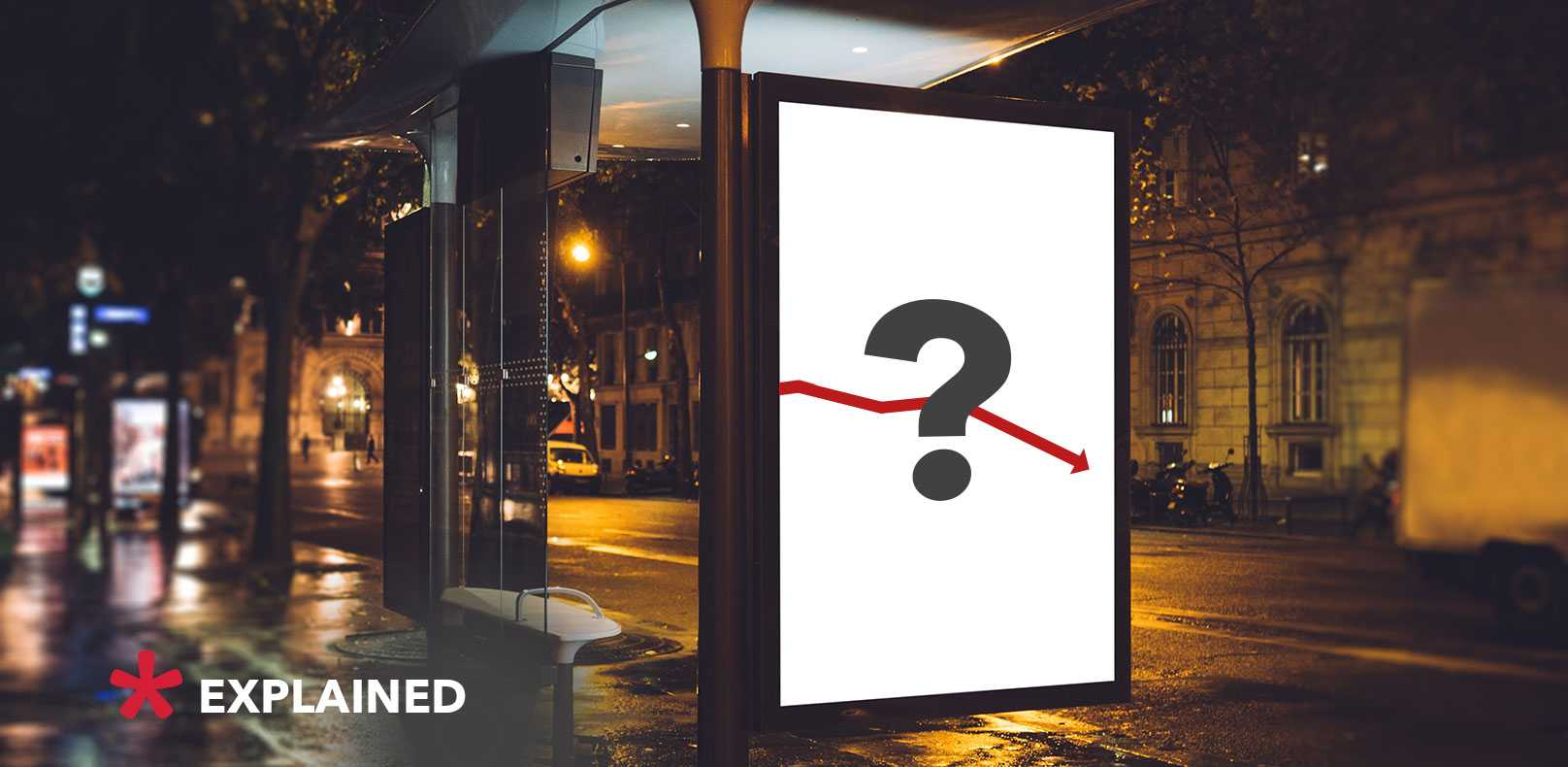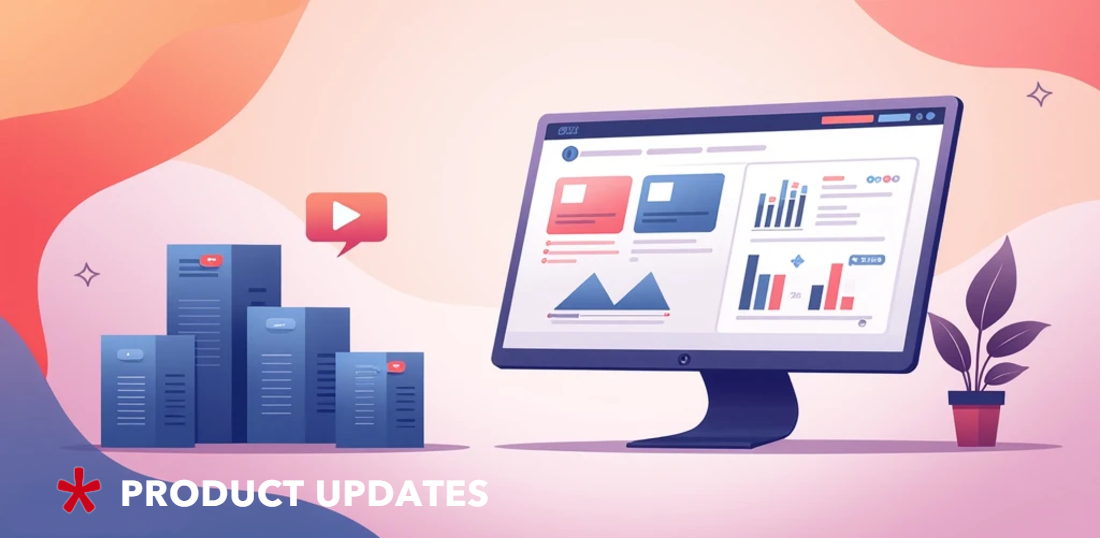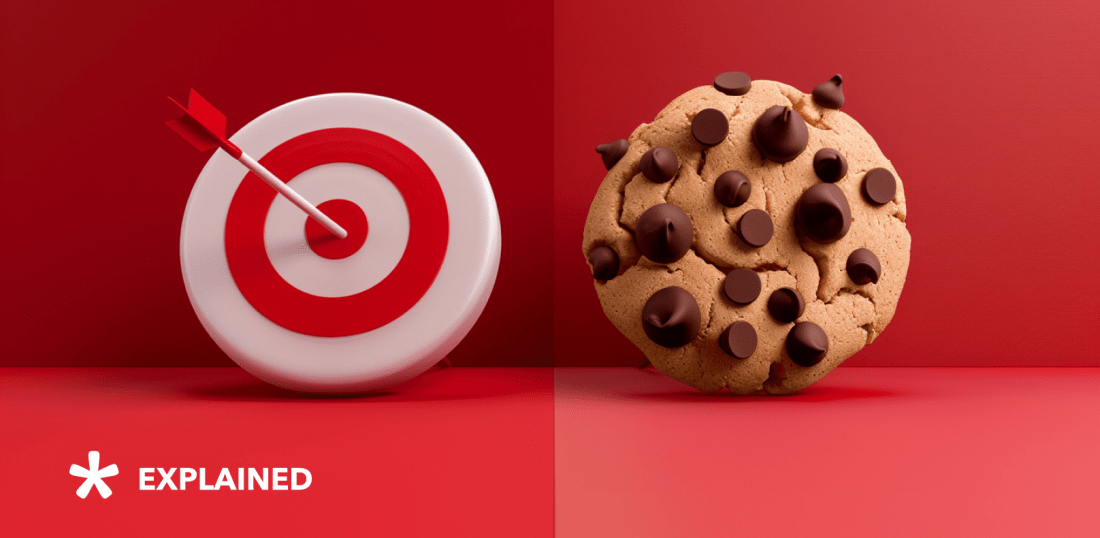
What Happens If You Stop Advertising During the Recession?
The global recession triggered by the coronavirus outbreak started to affect the advertising landscape. The country-wide lockdowns and the state of uncertainty rapidly depleted consumer spendings.
In the UK, 69% of brands report a steep decline in the demand for their products and services. Companies choose to review their ad spending plans. The majority of marketers (86%) are delaying or stopping their advertising campaigns. 90% of marketers witnessed the withdrawal or review of the budget commitments.
“Going dark” is a frequent choice for brands during the recession. When the sales drop, executives review budgets to minimize the losses. Marketing and ad spendings are usually a low priority and first to experience the cuts. So is it a smart move to stop advertising? All a matter of perspective.
- Short-term consequences
- Long-term consequences
- 1. Damage to brand health
- 2. Weakening of brand-consumer bond
- 3. Loss of the market share
- 4. Long recovery
- How to support a brand during the recession
- Insights into consumer psychology
- Advertising strategies with minimum budget
- Advertising strategy during the recession
- Conclusion
Short-term consequences
Freeze of advertising campaigns and marketing efforts does not have an immediate effect on the critical business metrics. Despite losing the share of voice, brands still maintain brand recognition and the loyal following.
An analysis by Kantar Millward Brown indicates that companies can cease their TV advertising without a significant impact in the short term. While communication awareness levels suffer, the impact on the overall image, sales, and new customers were minimal.
Nevertheless, in the long-run, “going dark” deteriorate the perception of the brand and may damage consideration levels and the market share, especially during a recession.
Long-term consequences
According to the case studies by Data2Decisions, an econometric consultancy, the negative consequences of the brand going dark are four times more severe in the long run.
There is a considerable time lag in witnessing the effects after you stop advertising. After the budget cut, the brand continues to reap financial rewards from brand investments in the previous quarters. This can hide the short-term losses and even lead to an increase in profitability. However, this revenue spike is deceptive and will be followed by forceful long-term consequences.
1. Damage to brand health
When brands reduce their presence in traditional media, consumers look for other options. Long-period off-air does not remain unnoticed by the public.
In one of the case studies, a UK insurance company with a substantial presence in TV advertising stopped appearing in commercials for two years. Their brand recognition was significantly damaged, and their consideration levels crushed.
The investigation by TiVo Research analyzed brands from various industries that reduced their TV ad spend by at least 25% between 2013 and 2014. They gathered data from 2.5M households and attributed TV ads exposure to purchasing behavior. Investigation indicated that 11 out of 15 brands reported a year-on-year drop in sales. On average, brands reduced their TV budgets by $3.1M and reported $8.6M of losses in sales. For each dollar, the brand chose not to spend on TV ads; they lost $2.7 in sales revenues.
2. Weakening of brand-consumer bond
The data from Kantar Millward Brown report indicate a strong correlation between the brand’s ad spendings and the level of “bonding”. Bonding is an aggregate measure of consumer relationships, which include metrics such as popularity, affinity, leadership, difference, and price. It is a measure of brand loyalty.
The decline in bonding leads to a subsequent decrease in sales and market share. When brands stop advertising for 6 months or more, their key awareness metrics plummet, demonstrating a 13% decline in brand usage and 6% in brand image. 60% percent of brands that “go dark” experience a downturn at least in one consumer relations metric.
Consumers gradually grow disengaged and distant from brands that don’t reach out and tend to replace them with more communicative counterparts.
Another critical factor in brand perception is the spread of rumors that inform consumer views of brands.
When the brand goes silent, it is immediately perceived as failing, which accelerates the decline of brand image and reputation.
3. Loss of the market share
Reducing the ad spend puts the brand’s market share at risk. When you stop advertising or spend considerably smaller budgets than competitors in the same segment, its customer base begins to deteriorate. The share of voice ultimately translates into the share of the market.
When the South African Automotive market experienced a downturn, car companies that chose to proceed without advertising lost its positions on the market. Their drop in the market share was more dramatic in the segments where competitors continued to advertise actively.
4. Long recovery
Resuming communication after the end of the downturn does not guarantee quick recovery to the same level. “Going dark” inflicts serious damage on the reputation, which is hard to undo.
Kantar Millward Brown illustrates it with an example of the brand that halted all advertising in the region B, but continued business as usual in the region A. In a year, the company lost 2% of its market share in the region B while maintaining same positions in the region A. However, the following year the company reinstated advertising in the region B, but the market share continued to lag behind.
An analysis by the Advertising Research Foundation concluded that it is more difficult and expensive to regain brand recognition and market share after you stop advertising than to maintain it with minor investments.
How to support a brand during the recession
Brands find themselves in a difficult position where they have to switch off their advertising, which leads to consumer disengagement and loss of the market share. Marketers need to find a balance between cutting ad spending and maintaining their position on the market. The situation is not so grim, and behavioral science can give us a hint on how to remain memorable at a minimum budget.
Insights into consumer psychology
Nielsen conducted a study on how advertising is grasped and memorized. They state that memories start to decay right after they are formed. The fastest rate of decay happens in the first 24 hours and gradually levels off. In their experiment, Nielsen tested the memorability of 49 ad videos right after the viewing and the day after. Metrics of brand recognition has fallen almost half overnight. Nielsen’s tracking data confirms that this correlation is true beyond the lab environment.
Nevertheless, advertising is not hopeless; Nielsen also found that relearning happens much faster than during the first encounter with the brand. Repetition can help to create long-lasting memories.
Moreover, the brand memorability of the video ads persisted over long periods of time. While the recall dropped by 50% on the first day, it persisted at the same level of 50% for half of the brands for the next 5 days. A number of contextual clues can reinforce the remembrance of the ad, for example, product placement. Advertising memories are encoded in context, and small implicit reminders can revive the memory of the brand. Even a minor brand placement, can trigger contextual memories and reinforce the consumer-brand bond.
Finally, only 8% of consumers think that brands should stop advertising during the pandemic. Most of those surveyed agree that brands should continue to communicate their brand values and positive outlook on the situation.
Advertising strategies with minimum budget
If the brand cannot handle the financial pressure of advertising in an expensive media such as TV or DOOH, it can use a more affordable channel, for instance, programmatic display, video or audio ads, such as ads in the podcasts, to remind consumers about their TV ads.
It is an effective way to use the media multiplier effect when advertising in one medium evokes memories of advertising in another medium. Frequently, brands use the same jingle for both TV and audio/video ads to reinforce associations.
Besides, advertisers can now take advantage of CPM drops on premium publishers’ websites. When it comes to ads bought through DSP, prices have decreased at least 5% and are becoming even lower as the articles get older. This enables brands to buy the top-quality ad inventory they couldn’t afford before at a reasonable price.
If the company cannot afford pre-rolls, it can retarget their consumers with banners of the same visual language and style. The underlying mechanism is securing communication and awareness levels. The customer base has to hold the brand in the active memory, at least with contextual reminders.
Advertising strategy during the recession
Advertising is the first to be sacrificed during periods of downturn and budget revisions. The lessons from the previous economic crisis suggest that it is hardly a smart move.
Reducing ad spent in a recession result in the plunge in sales and weakened brand health. Malik PIMS analyzed the last recession and found that increases in the ad spent are the most sustainable strategy that leads to a larger market share in the long run.
This conclusion may seem counterintuitive, but smart ad spending and new advertising approaches during the market slowdown is key to growth. Here are just a few examples to support it.
- Amazon grew its sales by 28% in the wake of the Great Recession in 2009. Despite the sluggish demand, Amazon continued to launch new innovative products and heavily advertise them. By providing quality low-cost products, particularly Kindle, they swiftly expanded their market share. Amazon tested new approaches with untapped customer segments, introducing affordable alternatives to struggling consumers. As a result, on Christmas Day 2009, more customers bought e-books as presents than printed books.
- The recession triggered by coronavirus made Shanghai-based cosmetics brand Forest Cabin temporarily shut around half of its 337 stores in China due to the lockdown. They repurposed their marketing budget and invested in live streaming to captivate customers. After initially dropping 90%, the brand’s sales went up 45%.
Conclusion
“Going dark’ is a decision that shouldn’t be taken lightly. The long-term outcome will offset any potential short-term gains and savings. Reducing advertising spending and media presence can amplify the negative consequences of the recession and compromise future sales.
- By reducing the share of voice, the brand puts its market share at risk. It is much more cost-effective to maintain limited media presence than try to regain an audience after a prolonged period of silence.
- Brands can transition from expensive mediums like TV and DOOH to more cost-effective digital advertising channels, like banners, pre-rolls, and in-game ads.
- Advertising is more critical during the recession than during the boom. The evidence shows that brands that maintain their ad spending gain a competitive advantage over brands that cut their budgets or stop advertising completely.
- Recession fosters an environment with lower competition and media costs. Brands can increase their advertising efforts with targeted campaigns and tap into new segments of the audience. After the end of the crisis, customers will go to brands that maintained their media presence. Advertising, during the recession, is an investment into your brand’s health, and not just another expendable cost.
If you’re considering reallocating your advertising budgets to programmatic channels, contact Dmitry Breus, Head of Admixer.DSP: dbreus@admixer.net.




